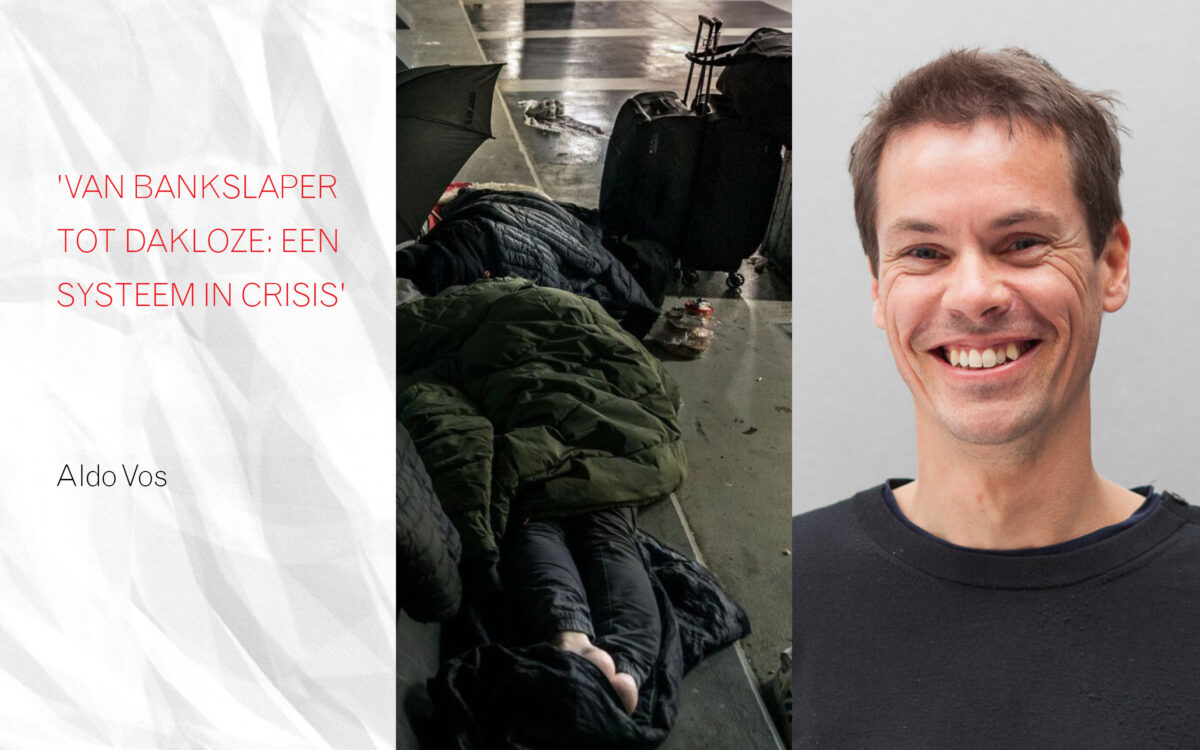
Blog ‘From couch sleeper to homeless: a system in crisis’
5 February 2025
Last week I attended a reception with architects, architectural historians and artists where two speakers talked about the housing crisis, or rather the homelessness crisis. First, Martijn van Leerdam, pastor-director of the Paulus Church in Rotterdam called attention to ‘het Goede en het Schone’ known as the Good and the Beautiful. The Beautiful was on the listeners’ radar, but are we doing the Good when hundreds of people sleep outside every night?
Then Marjolijn van Eig spoke. She had called attention to people who have to sleep on the couch in a column and then put her words into action and delved into the issue. Even though she did not have the solution right away, an initial investigation into the primary housing need and the lack of political interest in it does raise an important issue.
Lack of decisiveness
Then there was a toast, after all it was a party. But this morning I still woke up with a hangover (and not from the cava). There has been a housing shortage for a long time, I don’t really know any better, but the lack of political decisiveness has never been greater. The squatter riots in the 1980s “no housing no coronation,” were activist. In the 1990s Adriaan Geuze showed with ‘In Holland staat een huis’ what a task of 800,000 new homes meant. In the nineties, the rollout of the Vinex neighborhoods went hand in hand with young architects getting a chance to develop innovative typologies. None of it solved the housing shortage, but policymakers, developers, corporations, designers and builders did work together on that task and realized it.
Empty space vs. homelessness
I live on Katendrecht, formerly Rotterdam Zuid, but now part of Rotterdam Centrum due to successful area development. In the midst of the financial crisis, I could buy a ground-level home there with a young family for just over 2000 euros per square meter. Now only apartments are being built and sold for 7000 euros per square meter. For 55 square meters you pay 390,000 euros, which counts as “affordable purchase. We agreed on this in a housing agreement with each other to give starters and people moving on a chance in the housing market. For more than a year there have been 3 penthouses for sale in such an apartment complex. 240 square meters for 1.8 million euros. Sometimes they go off Funda, because a property should not be for sale for too long, but they always come back. Soon there will be another 8 penthouses in the neighborhood worth well over a million. I understand there is a market for them, at least on paper.
The problem of homelessness and sofa sleepers in Rotterdam cannot be solved by developers, and probably not by corporations. But the lack of public housing policy does lead to excesses: empty penthouses on the one hand, and people who can’t find a place to buy or rent on the other, slipping from couch sleeper to homeless.
Promising initiatives
Fortunately, there are also nice private initiatives. SAWA by Nice developers shows that you can very well realize mid-rent housing in the city and housing cooperatives like De Warren show that you can develop affordable housing together as residents. The architects involved show in word and deed that you can do the Good and the Clean. I wish I had a solution for all the homeless in Rotterdam right now, but the problem is too complex for that. What did happen is that the seed was planted. The pastor has done its job.
Aldo Vos
Architect-director